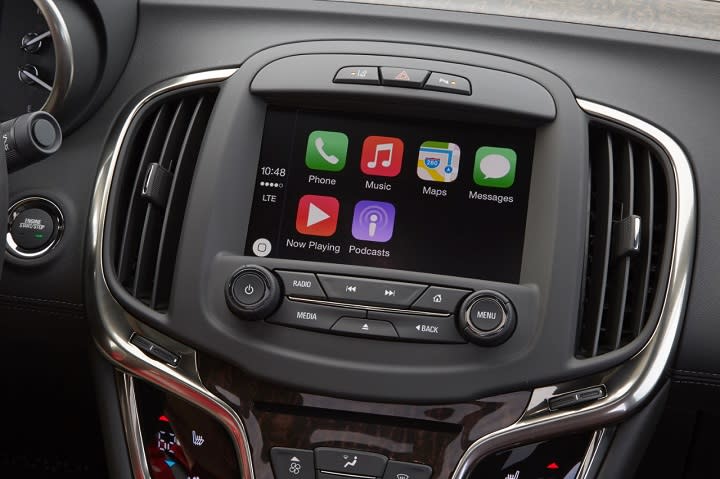2016 Smartphone Automotive Mirroring Report: New Mirroring Technology to Make Your Car Work Like Your Smartphone Is Step in Right Direction
New-car buyers want the communications/information technology in their vehicles to mirror, and interact with, the technology in their smartphone. That desire is getting closer and closer to being fully realized, according to the J.D. Power 2016 Smartphone Automotive Mirroring (SAM) Report.SM Technologies like Android Auto and Apple CarPlay are allowing vehicle owners to use the larger screen in their vehicle to take advantage of the more advanced, internet-connected functions found on their smartphone.
“Consumer demand is increasing for more advanced in-vehicle connectivity, and the technology is there, but the integration is far from seamless,” said Kathy Rizk, director of automotive consulting at J.D. Power. “Owners want their vehicle systems to become an extension of their smartphone experience, with the same speed, responsiveness, and functionality. But early feedback is mixed, and J.D. Power consultants have independently uncovered significant concerns with some of the current market executions.”

According to Rizk, when smartphone mirroring technology doesn’t function the way owners expect it to, they are more likely to blame the automaker than their personal device. Since 2013, the two most prevalent problems reported (far more frequently than other problems, according to the report) are Bluetooth pairing/poor connectivity and problems understanding voice commands. In 2016, those two issues combined for an average of 14 problems per 100 vehicles (PP100).
Some smartphone mirroring technologies work well, but those of lesser quality can greatly magnify those problems, the report suggests. An independent analysis by J.D. Power consultants of the same systems measured in the 2016 U.S. Initial Quality Study substantiates this state of affairs. The SAM Report discusses these issues and provides insights into the various integration executions that are currently in use.
“These issues are compounded by the fact that the presence of smartphone mirroring technology in a vehicle—and the hope that it will improve the user experience—is often a key purchase decision factor for many owners,” said Rizk. “When this technology does not function as well as expected—and, in fact, creates new and unique problems—owners are understandably frustrated.”
Even when they experience problems with mirroring and interactivity, most owners using Android Auto or Apple CarPlay express appreciation for the additional functionalities offered. They also appear pleased that they have the choice between their factory-installed system and smartphone mirroring. Thus, demand for this sort of technology is likely to grow, particularly as it becomes more reliable. Currently, 10 vehicle brands offer one or both Android and Apple technologies in select 2016 model-year vehicles in this year’s U.S. Initial Quality Study, but the number of brands and models offering the technologies has increased substantially for the 2017 model year, with many models slated to introduce smartphone mirroring technology in the future.
“The likely result of increased smartphone mirroring presence is that the impact on vehicle quality is expected to increase as well,” said Rizk. “Automakers that can get smartphone mirroring right have the potential to reduce problems and improve satisfaction. And with driver distraction increasingly becoming an area of concern, it is more important than ever to strike the appropriate balance between owner demand for feature contenting and keeping driver distraction minimized.”
Consumer Tips
Based on the report, J.D. Power offers the following consumer tips:
Be aware that smartphone, in-vehicle information/communication systems, and mirroring technologies are all evolving, and will continue to evolve. Inform yourself of the changes that are likely to occur.
If this sort of technology is important to you, test it in each vehicle that you test drive.
Look for technological improvements that will reduce driver distraction.
Make sure your in-vehicle systems will hold their technological edge as new smartphone models are introduced. You’re likely to buy a new, updated smartphone sooner than you’ll buy a new car.
Additional Research:
Abstract:
New-car buyers want the communications/information technology in their vehicles to mirror, and interact with, the technology in their smartphone.
Year:
2 016
Check this if this is NOT an Articles Listing Page:
New or Used:
New
Display Article Date?:
Article Is Flipbook:
No


